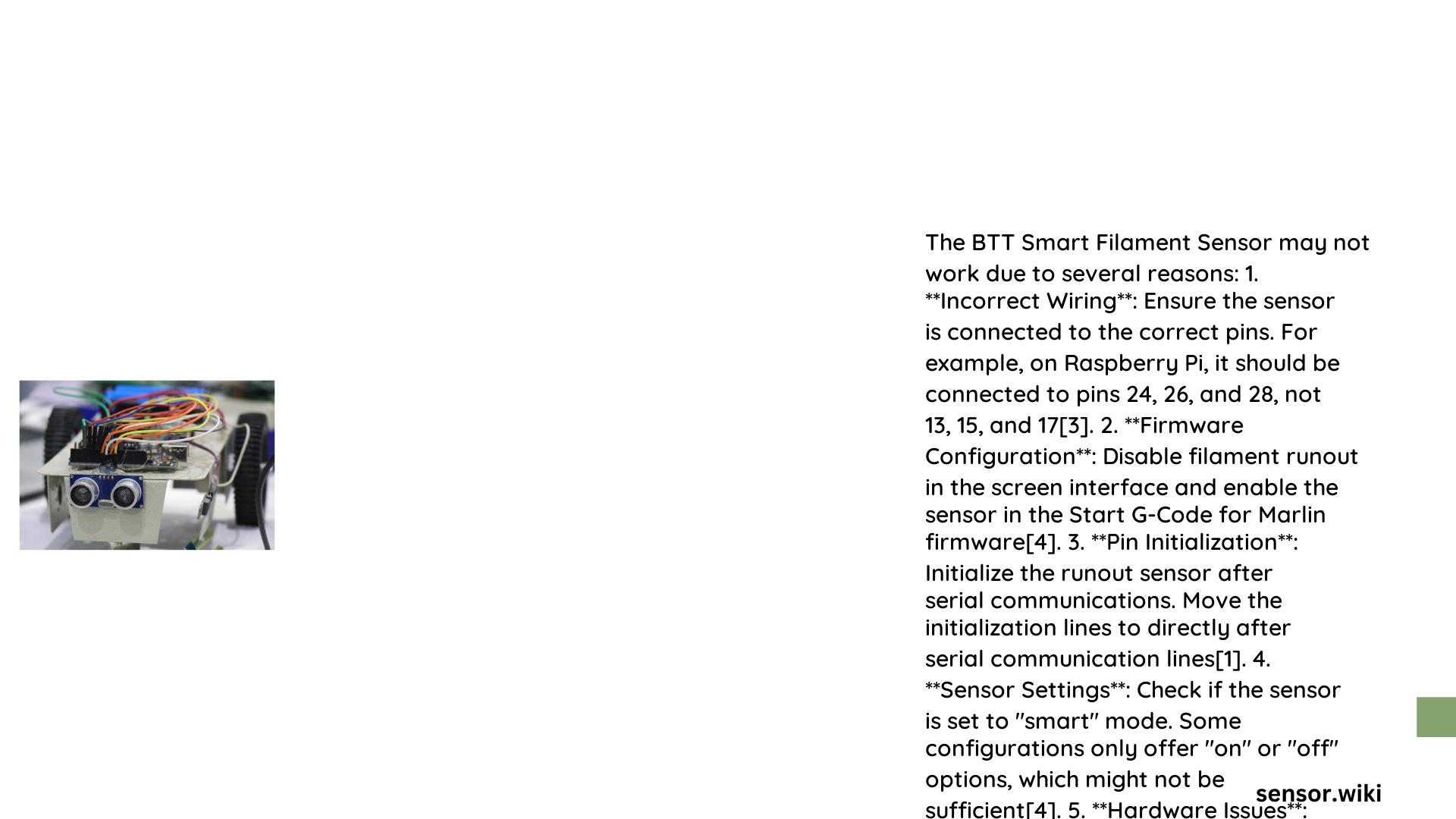The BTT Smart Filament Sensor is a critical component in 3D printing setups, designed to detect filament runout and prevent print failures. When this sensor malfunctions, it can disrupt your printing workflow, causing unexpected interruptions or incomplete prints. Understanding the root causes and implementing systematic troubleshooting techniques is essential for restoring its optimal performance and ensuring reliable filament monitoring.
What Causes BTT Smart Filament Sensor Malfunction?
How to Diagnose Wiring Problems?
Wiring issues are often the primary culprit behind BTT smart filament sensor failures. Proper connection is crucial for sensor functionality:
| Component | Correct Connection | Potential Issue |
|---|---|---|
| Power Pin | 3.3V – 5V DC | Voltage mismatch |
| Signal Pin | Endstop port | Incorrect pin configuration |
| Ground Pin | MCU ground | Loose or incorrect connection |
Voltage and Power Requirements
- Voltage Specification: Strictly use 3.3V or 5V
- Warning: Exceeding voltage limits can permanently damage the sensor
- Recommendation: Use a multimeter to verify precise voltage input
How to Check Sensor Pin Configuration?
Correct pin configuration is critical for sensor operation. Follow these steps:
- Identify the correct endstop port (E0STOP or E1STOP)
- Verify pin connections:
- Pin 1: 3.3V – 5V DC input
- Pin 3: Pulse output
- Pin 4: Ground
- Enable pull-up resistor by adding
^before pin number in configuration
What Are Common Firmware Compatibility Issues?
Different firmware platforms require specific configuration:
Klipper Configuration Example
[filament_motion_sensor SFS_T0]
detection_length: 10.00
extruder: extruder
switch_pin: ^PG11
pause_on_runout: True
Marlin Firmware Setup
#define FILAMENT_RUNOUT_SENSOR
#define FIL_RUNOUT_ENABLED_DEFAULT false
#define NUM_RUNOUT_SENSORS 1
How to Perform Physical Sensor Diagnostics?
Conduct hands-on tests to verify sensor functionality:
- Manual filament movement test
- Check for physical obstructions
- Verify sensor wheel movement
- Inspect mounting and alignment
What Are Advanced Calibration Techniques?
- Lubricate sensor wheel carefully
- Use paper shims to constrain movement
- Adjust detection length
- Create robust pause/resume macros
- Minimize potential false trigger points
Troubleshooting Checklist
- [ ] Verify correct voltage
- [ ] Check wiring connections
- [ ] Confirm firmware configuration
- [ ] Test physical sensor movement
- [ ] Calibrate detection parameters
Preventive Maintenance Tips

- Regular sensor cleaning
- Periodic connection inspection
- Firmware updates
- Careful filament handling
- Proper mounting alignment
Final Recommendations
When persistent issues occur, consider:
– Consulting manufacturer support
– Replacing sensor if multiple troubleshooting attempts fail
– Seeking community forum advice
Reference:
1. Duet3D Forum Filament Sensor Setup
2. Voron Documentation Sensor Guide
3. BigTreeTech Official Support
